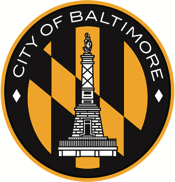

Baltimore is a top destination for students looking to attend college.
The Charm City has ranked eighth among major metro areas in the American Institute for Economic Research’s College Destinations Index for 2013 and 2014.
Holding place for old articles.


Baltimore is a top destination for students looking to attend college.
The Charm City has ranked eighth among major metro areas in the American Institute for Economic Research’s College Destinations Index for 2013 and 2014.
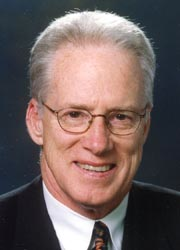

‘We need to provide high-quality education at a lower cost. If at the end of the day, this means there aren’t as many universities or some people don’t have jobs, you know, this is not a welfare business. We have the interest of the nation at stake. And this is what we all have to keep focused on—high quality and containing costs.’
William E. Kirwan, Chancellor, University
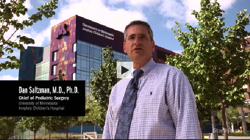

Dr. Daniel Saltzman says he can prove that bacteria that ordinarily cause food poisoning in people can be modified for use as guided missiles to deliver cancer-killing payloads into tumors.
But he needs $500,000 for some preliminary work, and despite his project’s potential, he’s not holding his breath for funding from the National Institutes of Health (NIH), the nation’s leading source of biomedical research grants.


As reported in the Baltimore News Journal, Baltimore County Executive Kevin Kamenetz on Monday proposed a new department name and department head nominee for the County’s economic development agency.
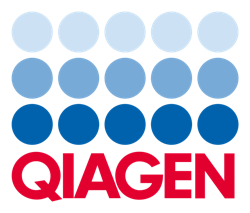

QIAGEN has announced an agreement with Eli Lilly and Company to develop and commercialize a molecular companion diagnostic paired with a novel Lilly oncology compound. This is the third co-development project by QIAGEN and Lilly to create companion diagnostics, which are tests that analyze genomic information in patient samples to enable personalized decisions on treatments.
The latest collaboration, involving an undisclosed Lilly compound and an undisclosed molecular diagnostic target, builds on a master collaboration agreement for development of tailored therapies in cancer and other therapeutic areas signed earlier this year.


Before 1960, the only way to treat cardiac arrest involved opening up the chest cavity and applying manual cardiac massage. The surgeon would take the heart in his hands and squeeze it ever so cautiously to a distinct rhythm in order to help pump blood to the brain and other important organs, giving the patient a chance at life once again. While a bold method, it was rarely attempted and more often than not didn’t prove successful.
So, taking this as an opportunity to try something new, surgeons at Johns Hopkins created a new Cardiopulmonary Resuscitation technique dubbed closed-chest cardiac massage. The group of surgeons with a knack for innovation created a way to pump the arrested heart without ever having to open up the patient.


GlaxoSmithKline’s $500 million portfolio with Avalon Ventures invested in its in first startup – Palo Alto-based Sitari Pharmaceuticals.
According to Fierce Biotech, the San Diego-based venture group and its partners at GSK are funding Sitari with $10 million in cash and research support, with the R&D assist coming from the pharma giant.


The HCIL’s ongoing work with temporal event records has produced powerful tools for analyzing and exploring patterns of point-based events (Lifelines2, LifeFlow). However, users found that point-based events limited their capacity to solve problems that had inherently interval attributes, for example, the 3-month interval during which patients took a medication. To address this issue, EventFlow extends its predecessors to support both point-based and interval-based events. Interval-based events represent a fundamental increase in complexity at every level of the application, from the input and data structure to the eventual questions that a user might ask of the data. Our goal was to accomplish this integration in a way that appeared to users as a simple and intuitive extension of the original LifeFlow tool. With EventFlow, we present novel solutions for displaying interval events, simplifying their visual impact, and incorporating them into meaningful queries.


Open innovation is not new, but it is relatively new to health care, igniting a broad cross-section of challenges, hackathons, and competitions that seek to identify breakthrough solutions to solve for our health and our health care. By applying the best practices of the leading tech accelerators, these programs accelerate the speed at which new solutions are developed, companies are formed, and jobs are created.
To quote Todd Park, CTO of the United States of America, “There has never been a better time to be an entrepreneur at the intersection of health care and IT.” And there has never been a better time, or industry, for open innovation, a game where no one loses. Open innovation is good for the sponsoring organization, good for the innovator, good for the patient, and good for America.
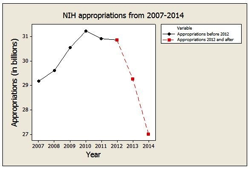

It’s more than likely that the readers of the NPQ Newswire may not be all that heavily involved in scientific research, but for those who are, the impact of federal budget cuts on agencies such as the National Institutes of Health and other federal agencies supporting scientific research have been devastating. For example, in fiscal 2013, the NIH had its budget cut (per sequestration) by 5 percent, roughly $1.5 billion, which meant that 640 research grants were not issued. As this Mediaite table shows, the NIH may be the largest funder of biomedical research in the world, but its appropriations have plummeted from over $31 billion in 2010 to a projected $27 billion in 2014: